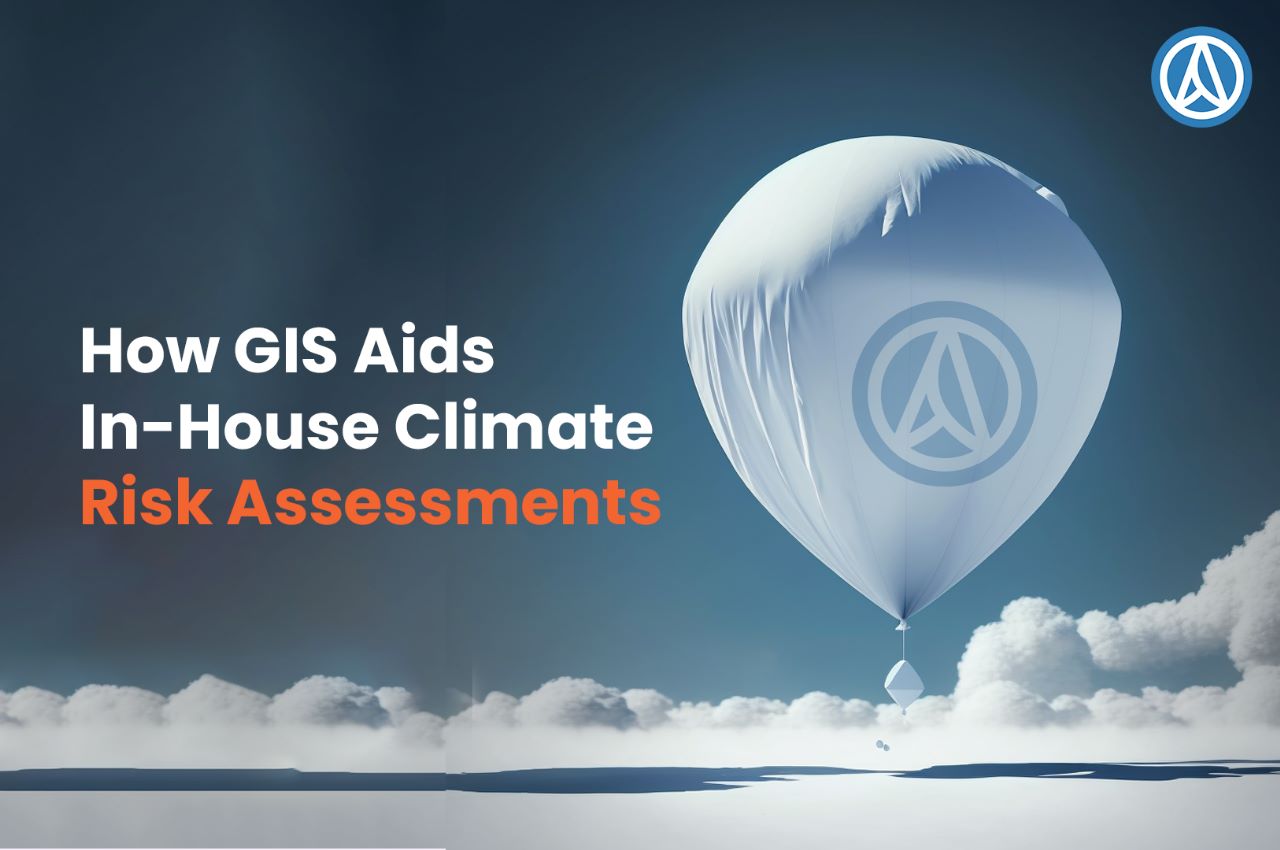Uses of GIS in Climate Risk Assessment For Your Organization
Climate change is a pressing global issue that significantly impacts human lives and natural ecosystems. Moreover, its effects only become more severe and widespread. Thus, all organizations must take steps to calculate their climate risk assessment and make the necessary changes in their operations.
Geographic Information System (GIS) is a powerful tool that can aid organizations in assessing and mitigating climate risks in-house. In this blog, we explain how you can assess climate risk using GIS for your business. But first, let us understand what is a GIS system.
What Is GIS Technology?
GIS is a computer-based system that allows users to create, manage, and analyze geographical data. It provides a wide range of capabilities, including data visualization, data management, and spatial analysis, that can be used to understand and manage the impacts of climate change.
As GIS technology progresses, GIS mapping has become an important tool for detecting links between the climate’s current state and other areas of concern. Open-source databases (available to all) provide unparalleled spatial data collecting, and high-speed data analysis reveals changing situations in real-time.
9 Applications of GIS In Climate Risk Assessment
Climate scientists collect massive volumes of data to track environmental issues and understand their causes. Spatial thinking is essential for evaluating and synthesizing data from remote sensors and satellite pictures. Researchers use geographic data to reveal how the world has evolved through time, forecast future changes, and convey their findings to governments and the general public.
Many municipal governments, charity organizations, and corporations have pledged to reduce their use of fossil fuels to combat climate change. Establishing long-term systems that put alternative energy sources to use requires solid data and continuous monitoring. As a result, many businesses use GIS to handle the spatial difficulties associated with reducing their carbon footprints.
Researchers are now using GIS for data on climate change in the following ways:
- Identifying places where temperatures are unusually high or unpredictable in comparison to the world’s average
- Investigating how natural atmospheric processes may influence global warming
- Developing simulations to demonstrate how a warmer climate can affect the ecosystem of certain locations
- Visualizing various aspects that impact crop development, industry, wildlife, and more
- Creating graphics to demonstrate how people and companies use power
- Increasing awareness of a region’s available natural resources
- Wind farm placement to maximize efficiency while minimizing the impact on bird populations
- Identifying the optimal areas for growing crops that produce biomass for use as fuel
- Determining whether a building receives enough sunshine to be a viable candidate for solar panel installation
Geospatial tools provide insight into changing weather patterns, increasing sea levels, and mounting threats to human health in the form of diseases and death. Informative visualizations depict these advancements in ways that scientists and non-experts may comprehend. In turn, local governments, non-profits, and other organizations use what they learn from spatial models to develop strategies and make educated decisions.
Conclusion
Overall, GIS is a powerful tool that can be used to assess climate risks and develop effective risk management strategies. Climate change poses a significant risk to organizations of all types, but with the help of GIS, organizations can assess and manage these risks in-house.
GIS has many benefits such as creating detailed maps of assets and operations, identifying at-risk areas, and developing and implementing risk management strategies. With the help of GIS, organizations can take an active role in protecting their functioning from the impacts of climate change.

